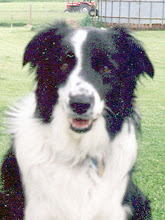Christmas tree circa 2012. Our trees have ranged from Charlie Brown specials, bushes, "Eileen," and near perfect.
When I saw the young couple carrying their bushy Christmas tree to their little hatchback car, a smile crossed my face.
Novices, I thought.
But with a few heaves, hos and other words, they got the tree into the hatchback and were one their way.
I've been taking trips to Christmas tree farms for decades. Some of my earliest memories of Christmas tree shopping include riding in the bed of the pickup truck with my sister and the tree, while our parents and younger brother rode up front. It was the 1970's, and riding in the pickup bed was a treat, even in December.
After dozens of trips to Christmas tree farms, I've learned three truths of Christmas tree shopping.
1. Those Hallmark moments almost never happen--and when they do, they're fleeting.
We live in Ohio. In December, bright, sunny days are few. Snow seldom covers the ground. The wind is rarely calm. So the odds of a sunny, calm day with a few inches of snow on the ground are very, very low. And when they do happen, someone still has to lie on the ground and cut down the tree.
Last year, we arrived at the Christmas tree farm at 4 p.m., and were the 8th customer of the day. It was pouring rain and mud puddles were everywhere. "Just stay in the driveway," the shivering worker told us.
This year, we arrived at 10:45 a.m., as the winds and rains were supposed to come in the afternoon. We walked through a little mud, saw a glimpse of sunshine and considered it a pretty good day for tree cutting.
2. You'll never cut the first tree that you like. That would be too easy. That would leave you wondering if there was a prettier, more perfect tree just yards away. If you want to speed the process along, just walk up to the first tree you see and say, "What about this one?" That way you will have considered one when you find an acceptable one 20 yards down the path.
3. The tree changes size somewhere between the field and the living room. In the early days of Christmas shopping, when we had a big house, less clutter and fewer dogs, the tree seemed to grow, filling half the living room--and that was after we cut a foot off the end.
In recent years, though, we've chanted, "Smaller tree, smaller tree," as we drive to the Christmas tree farm. This year, we ended up with a tree that needs a booster seat.
This year's Christmas tree.
Meanwhile on the farm: Instead of Black Friday, we celebrated Black and White Friday. Friends came over to work their Border collies on sheep on Friday. Temperatures were in the 40's so the dogs and sheep didn't get hot, and the humans stayed comfortable.
he sheep are still finding plenty of grass for grazing, which makes me happy. The past few years, we've had late springs and I've been counting the bales left, hoping we'll get through winter. With each passing week, it looks like we'll be in good shape for hay this year.
































































